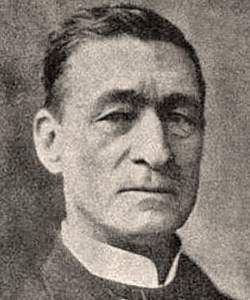Theodore George Wormley (Dickinson Chronicles)
Scholarship
Theodore George Wormley was born in Wormleysburg, Pennsylvania on April 1, 1826. Shortly thereafter he and his family moved to Carlisle, Pennsylvania where he spent his childhood. Theodore Wormley became a pupil at the Grammar School of the local Dickinson College in 1843. On July 9, 1844, Wormley joined many of his grammar school classmates in the freshmen class of 1848 at Dickinson College. He was active in the Union Philosophical Society but, under the influence of Spencer Fullerton Baird, William Henry Allen, and Thomas Emory Sudler, he excelled in the sciences and mathematics. His skills at Greek and other subjects were a different matter, however, and his marks overall after his sophomore year gave him the lowest ranking in his class. He did not enroll as a full time student in the junior class of 1848 but entered Philadelphia Medical College instead, where he received his degree in 1849.
The newly minted Doctor Wormley then began a practice in Columbus, Ohio in 1850. In 1852, he was appointed as the professor of chemistry and the natural sciences at Capitol University in Columbus, a position he held until 1865. In 1854, he was also appointed as the professor of chemistry and toxicology at at Starling Medical College, also in Columbus. He was appointed as the State Gas Commissioner of Ohio in 1867. Between 1869 and 1874 he was also the State Chemist of the Ohio Geological Survey. He was one of the vice-presidents of the centennial celebration of chemistry, held in 1874 at the former home of Joseph Priestly in Pennsylvania. Two years later he delivered the address on “American Chemical Contributions to the Medical Progress of the Century” before the International Medical Congress in Philadelphia. His status had by now been well recognized and on June 5, 1877, Wormley left Starling Medical College to accept the position of professor of chemistry and toxicology in the Department of Medicine at the University of Pennsylvania, after the resignation of Professor Robert E. Rogers. Wormley held this position until his death.
His main work, The Micro Chemistry of Poisons, written at the University of Pennsylvania, aided significantly his reputation as America's pioneering microchemist and became the standard on the subject world-wide. The book is dedicated to his wife who herself drew most of the books illustrations from nature under a microscope. Wormley's knowledge of poisons and chemicals placed him at constant call as a scientific witness in many legal cases. Among the honorary degrees conferred on him came a Doctor of Philosophy from his alma mater in 1870.
His wife was native of Columbus, Ohio and the couple had two daughters. Theodore George Wormley died on January 2, 1897 at his home in Philadelphia. He was seventy years old.
The newly minted Doctor Wormley then began a practice in Columbus, Ohio in 1850. In 1852, he was appointed as the professor of chemistry and the natural sciences at Capitol University in Columbus, a position he held until 1865. In 1854, he was also appointed as the professor of chemistry and toxicology at at Starling Medical College, also in Columbus. He was appointed as the State Gas Commissioner of Ohio in 1867. Between 1869 and 1874 he was also the State Chemist of the Ohio Geological Survey. He was one of the vice-presidents of the centennial celebration of chemistry, held in 1874 at the former home of Joseph Priestly in Pennsylvania. Two years later he delivered the address on “American Chemical Contributions to the Medical Progress of the Century” before the International Medical Congress in Philadelphia. His status had by now been well recognized and on June 5, 1877, Wormley left Starling Medical College to accept the position of professor of chemistry and toxicology in the Department of Medicine at the University of Pennsylvania, after the resignation of Professor Robert E. Rogers. Wormley held this position until his death.
His main work, The Micro Chemistry of Poisons, written at the University of Pennsylvania, aided significantly his reputation as America's pioneering microchemist and became the standard on the subject world-wide. The book is dedicated to his wife who herself drew most of the books illustrations from nature under a microscope. Wormley's knowledge of poisons and chemicals placed him at constant call as a scientific witness in many legal cases. Among the honorary degrees conferred on him came a Doctor of Philosophy from his alma mater in 1870.
His wife was native of Columbus, Ohio and the couple had two daughters. Theodore George Wormley died on January 2, 1897 at his home in Philadelphia. He was seventy years old.
John Osborne and James W. Gerencser, eds., “Theodore George Wormley,” Dickinson Chronicles, http://chronicles.dickinson.edu/encyclo/w/ed_wormleyTG.htm.



